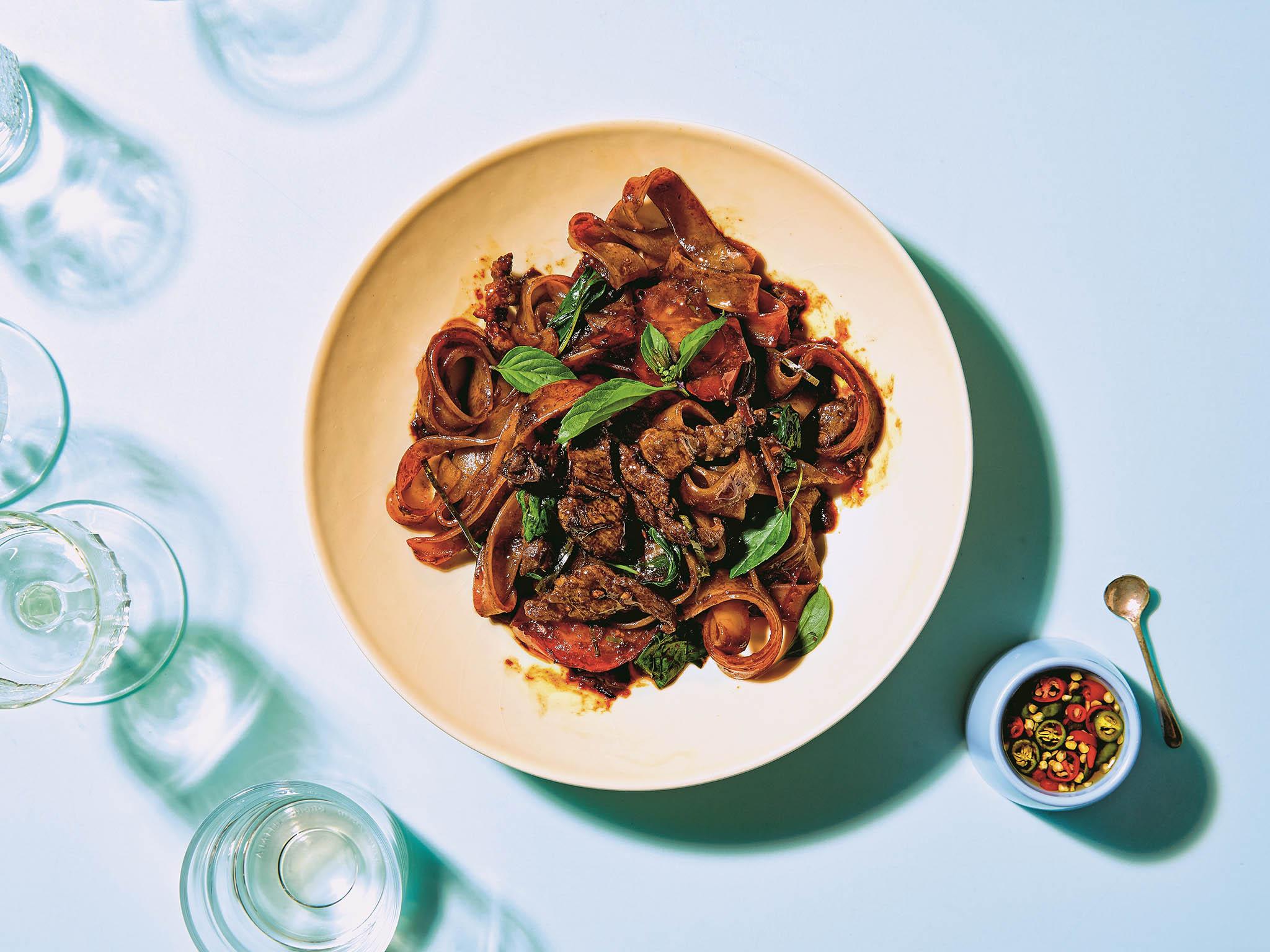How to make Kay Plunkett-Hogge's drunkard’s noodles
So called, because it’s alleged to be an excellent hangover cure, better even than a bacon sandwich. Most often, you’ll find this served with beef, but it is equally delicious with pork or chicken, depending on what you have around

Your support helps us to tell the story
From reproductive rights to climate change to Big Tech, The Independent is on the ground when the story is developing. Whether it's investigating the financials of Elon Musk's pro-Trump PAC or producing our latest documentary, 'The A Word', which shines a light on the American women fighting for reproductive rights, we know how important it is to parse out the facts from the messaging.
At such a critical moment in US history, we need reporters on the ground. Your donation allows us to keep sending journalists to speak to both sides of the story.
The Independent is trusted by Americans across the entire political spectrum. And unlike many other quality news outlets, we choose not to lock Americans out of our reporting and analysis with paywalls. We believe quality journalism should be available to everyone, paid for by those who can afford it.
Your support makes all the difference.Pad kee mao – drunkard’s noodles
Serves 2
115 g/4 oz sen yai (large) rice noodles
1 heaped tsp nam prik pao (roasted chilli paste)
1 tbsp dark soy sauce
2 tbsp nam pla (fish sauce)
1 tsp tamarind paste (puree)
1 tsp chilli powder
a pinch of sugar
2–3 Thai bird’s eye chillies
2 garlic cloves, peeled
2 coriander (cilantro) roots
a pinch of salt
2 tbsp vegetable oil
125 g/41⁄2 oz beef, pork or chicken, cut into thin strips
1 tomato, cut into 8 wedges
4 kaffir lime leaves, finely sliced
a large handful of Thai basil leaves, plus extra to garnish
In a large bowl, soak the noodles in hot water until they separate and reach the texture of uncooked fresh pasta.
In a small bowl, mix together the nam prik pao, dark soy, nam pla, tamarind paste, chilli powder and sugar, until the sugar has dissolved.
Pound the chillies, garlic and coriander root together with the salt in a pestle and mortar until you have a rough paste.
Heat your wok over a high heat until it’s very hot, then add the oil. Add the garlic and coriander root paste, and stir-fry for a minute or so until it’s really fragrant, then add the meat. Stir-fry until it takes colour, then add the tomato, lime leaves and the chilli paste mixture, stirring them in well.
Now add the drained noodles and half of the basil. Keep stir-frying until everything is cooked through and well combined, about 5 minutes. Stir through the remaining basil and serve immediately, garnished with the extra basil leaves.
Tips: Nam prik pao (roasted chilli paste)
This is not a curry paste or chilli jam – it’s a whole different beast. Most people buy it at the Thai supermarket. The Mae Pranom brand is one of my favourites, but they’re all pretty good.

Coriander (cilantro) root, leaves, seeds and stems: Thais use all parts of the coriander plant. Keep the seeds in the spice rack, the roots in the freezer (you’ll generally find them in the freezer section of your Asian supermarket), and buy the leaves as you need them. They perish fast. Try to keep a fair bit of stem on the roots. If you cannot find coriander root – and there will be weeks on end when there doesn’t seem to be any about – use the stems instead. It’s not quite the same, but it’ll do. If you become a super-keen Thai cook, buy it in bulk when you see it, and freeze it.
'Baan: Recipes and stories from my Thai home' by Kay Plunkett-Hogge, published by Pavilion Books. Recipe images credit to Louise Hagger
Join our commenting forum
Join thought-provoking conversations, follow other Independent readers and see their replies
Comments